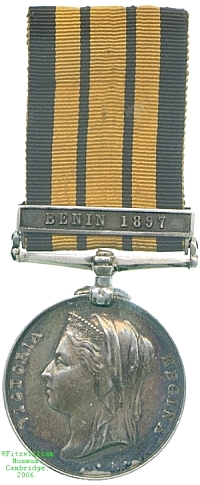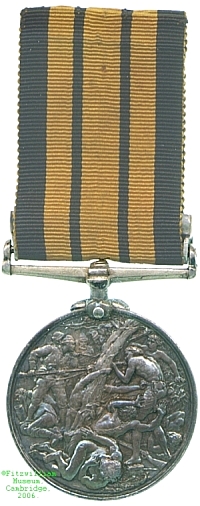East and West Africa Medal, 1897
Peace-keeping operations in the British possessions in Africa, as anywhere else, required a large number of small campaigns, several of which, from 1892 until 1900, were considered to merit this medal, which in terms of design is a continuation of the Ashantee War Medal. Recipients who held that medal already were therefore awarded only extra clasps.
The Benin 1897 bar was given for involvement in the conquest of the previously independent Kingdom of Benin, which had existed since the 14th century. This campaign was occasioned by the slaying of eight British representatives there in 1896, in a time of increasing tension over the palm-oil trade, which Benin protected fiercely. The resultant Punitive Expedition captured and looted Benin City, which is now in Nigeria. The bar was awarded to personnel of the Navy not for this attack, however, but for the capture of the seaboard towns of Gwato (Ughoton) and Sapobo.
This example was awarded to Pvt. G. Brown of the Royal Marines, whose unit were berthed for the campaign aboard the by-now veteran HMS St George. (The Watson Collection also includes medals awarded to men of this ship from the Brass River and M'wele campaigns of 1895-1896.) Lester Watson acquired the medal at some point before 1928.

